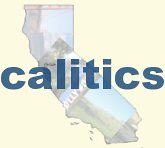Supercop
President Obama reportedly wants to put the Federal Reserve in charge of managing systemic risk among "too big to fail" financial giants. And why not? They've certainly done a bang-up job so far.
Thrill to them throwing down the hammer on the biggest banks during the stress tests:
The Federal Reserve significantly scaled back the size of the capital hole facing some of the nation's biggest banks shortly before concluding its stress tests, following two weeks of intense bargaining.
In addition, according to bank and government officials, the Fed used a different measurement of bank-capital levels than analysts and investors had been expecting, resulting in much smaller capital deficits.
When the Fed last month informed banks of its preliminary stress-test findings, executives at corporations including Bank of America Corp., Citigroup Inc. and Wells Fargo & Co. were furious with what they viewed as the Fed's exaggerated capital holes. A senior executive at one bank fumed that the Fed's initial estimate was "mind-numbingly" large. Bank of America was "shocked" when it saw its initial figure, which was more than $50 billion, according to a person familiar with the negotiations.
Bank of America's final gap was $33.9 billion, down from an earlier estimate of more than $50 billion, according to a person familiar with the negotiations [...]
At Fifth Third Bancorp, the Fed was preparing to tell the Cincinnati-based bank to find $2.6 billion in capital, but the final tally dropped to $1.1 billion. Fifth Third said the decline stemmed in part from regulators giving it credit for selling a part of a business line.
Citigroup's capital shortfall was initially pegged at roughly $35 billion, according to people familiar with the matter. The ultimate number was $5.5 billion. Executives persuaded the Fed to include the future capital-boosting impacts of pending transactions.
Chill to the makeup of one of the Fed's branch boards:
The kerfuffle about current New York Federal Reserve Bank Chairman Stephen Friedman's purchase of some Goldman stock while the Fed was involved in reviewing major decisions about Goldman's future—well-covered by the Wall Street Journal here and here—raises a fundamental question about Wall Street's corruption [...]
So who selected Geithner back in 2003? Well, the Fed board created a select committee to pick the CEO. This committee included none other than Hank Greenberg, then the chairman of AIG; John Whitehead, a former chairman of Goldman Sachs; Walter Shipley, a former chairman of Chase Manhattan Bank, now JPMorgan Chase; and Pete Peterson, a former chairman of Lehman Bros. It was not a group of typical depositors worried about the security of their savings accounts but rather one whose interest was in preserving a capital structure and way of doing business that cried out for—but did not receive—harsh examination from the N.Y. Fed.
The composition of the New York Fed's board, which supervises the organization and current Chairman Friedman, is equally troubling. The board consists of nine individuals, three chosen by the N.Y. Fed member banks as their own representatives, three chosen by the member banks to represent the public, and three chosen by the national Fed Board of Governors to represent the public. In theory this sounds great: Six board members are "public" representatives.
So whom have the banks chosen to be the public representatives on the board during the past decade, as the crisis developed and unfolded? Dick Fuld, the former chairman of Lehman; Jeff Immelt, the chairman of GE; Gene McGrath, the chairman of Con Edison; Ronay Menschel, the chairwoman of Phipps Houses and also, not insignificantly, the wife of Richard Menschel, a former senior partner at Goldman. Whom did the Board of Governors choose as its public representatives? Steve Friedman, the former chairman of Goldman; Pete Peterson; Jerry Speyer, CEO of real estate giant Tishman Speyer; and Jerry Levin, the former chairman of Time Warner. These were the people who were supposedly representing our interests!
As Spitzer notes (and by the way, can we start blaming Eliot Spitzer's libido as among the causes of the financial crisis?), it's not necessarily corruption at the NY Fed, but a very cozy groupthink, where what's good for America and what's good for Wall Street are seen as equal. Whether you think the stress test portrayed a false picture of overall banking industry health or not, everybody basically agrees that stronger regulation and enforcement could avert the kind of crisis we've already seen. But the Federal Reserve acting as any kind of regulator for large banks and investment firms should invite peals of laughter. It reminds me of Bush hiring top industry lobbyists to regulate the industries for which they used to lobby.
Labels: banking industry, Barack Obama, Eliot Spitzer, Federal Reserve, financial industry, New York Fed, regulations, stress test






<< Home